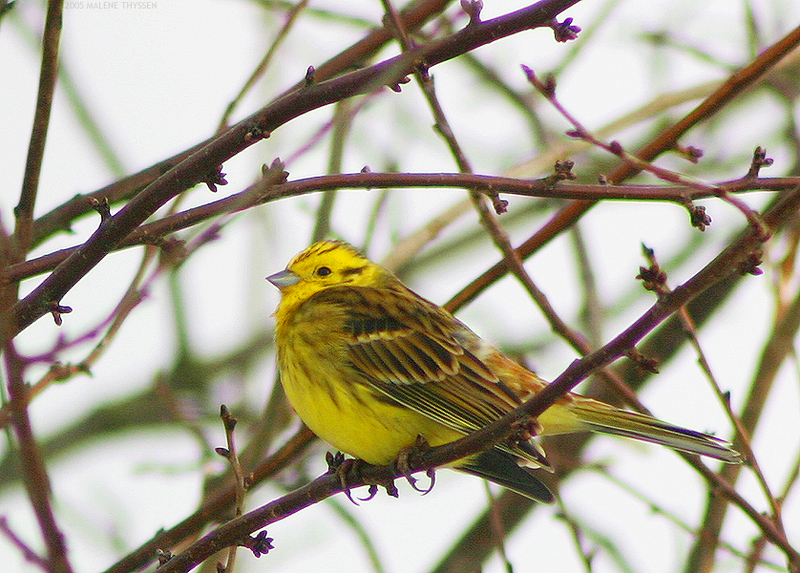|
| Query: Little bunting | Result: 20th of 26 | |
Yellowhammer (Emberiza citrinella) - Wiki
| Subject: | Yellowhammer (Emberiza citrinella) - Wiki
| |

| Resolution: 838x600
File Size: 692456 Bytes
Date: 2005:02:15 12:04:44
Camera: Canon EOS DIGITAL REBEL (Canon)
F number: f/7.1
Exposure: 1/400 sec
Focal Length: 300/1
Upload Date: 2007:10:19 11:07:32
|
Yellowhammer
From Wikipedia, the free encyclopedia
[Photo] Photo of Yellowhammer (Emberiza citrinella). Da: Foto af gulspurv (Emberiza citrinella). Date: 15. februar, 2005. Photo by by Malene Thyssen. Please credit this: Malene Thyssen, http://commons.wikimedia.org/wiki/User:Malene Copyright (C) 2005 Malene Thyssen
Permission is granted to copy, distribute and/or modify this document under the terms of the GNU Free Documentation License, Version 1.2 or any later version published by the Free Software Foundation; with no Invariant Sections, no Front-Cover Texts, and no Back-Cover Texts. A copy of the license is included in the section entitled "GNU Free Documentation License". |
The Yellowhammer, Emberiza citrinella, is a passerine bird in the bunting family Emberizidae, a group now separated by most modern authors from the finches, Fringillidae.
It breeds across Europe and much of Asia. The Yellowhammer was also introduced to New Zealand in 1862 and is now common and widespread there. It is probably more abundant in New Zealand now than in Europe where it has been in serious decline. In Europe and Asia most birds are resident, but some far northern birds migrate south in winter. It is common in all sorts of open areas with some scrub or trees.
In the winter they gather together to form small flocks of birds.
The Yellowhammer is a robust 15.5-17cm long bird, with a thick seed-eater's bill. The male has a bright yellow head, yellow underparts, and a heavily streaked brown back. The female is much duller, and more streaked below.
The familiar, if somewhat monotonous, song of the cock is A little bit of bread and no cheese.
Its natural diet consists of insects when feeding young, and otherwise seeds. The nest is on the ground. 3-6 eggs are laid, which show the hair-like markings characteristic of those of buntings.
It has been claimed by Karl Czerny, that the Yellowhammer's song was the inspiration for the "fate" motif of the Symphony No. 5 by Ludwig van Beethoven.
The unrelated Yellow-shafted Flicker, Colaptes auratus, is also known as the yellowhammer in the Southern United States, especially Alabama, where it is the state bird.
http://en.wikipedia.org/wiki/Yellowhammer
| The text in this page is based on the copyrighted Wikipedia article shown in above URL. It is used under the GNU Free Documentation License. You may redistribute it, verbatim or modified, providing that you comply with the terms of the GFDL. |
|
^o^
Animal Pictures Archive for smart phones
^o^
|
|

